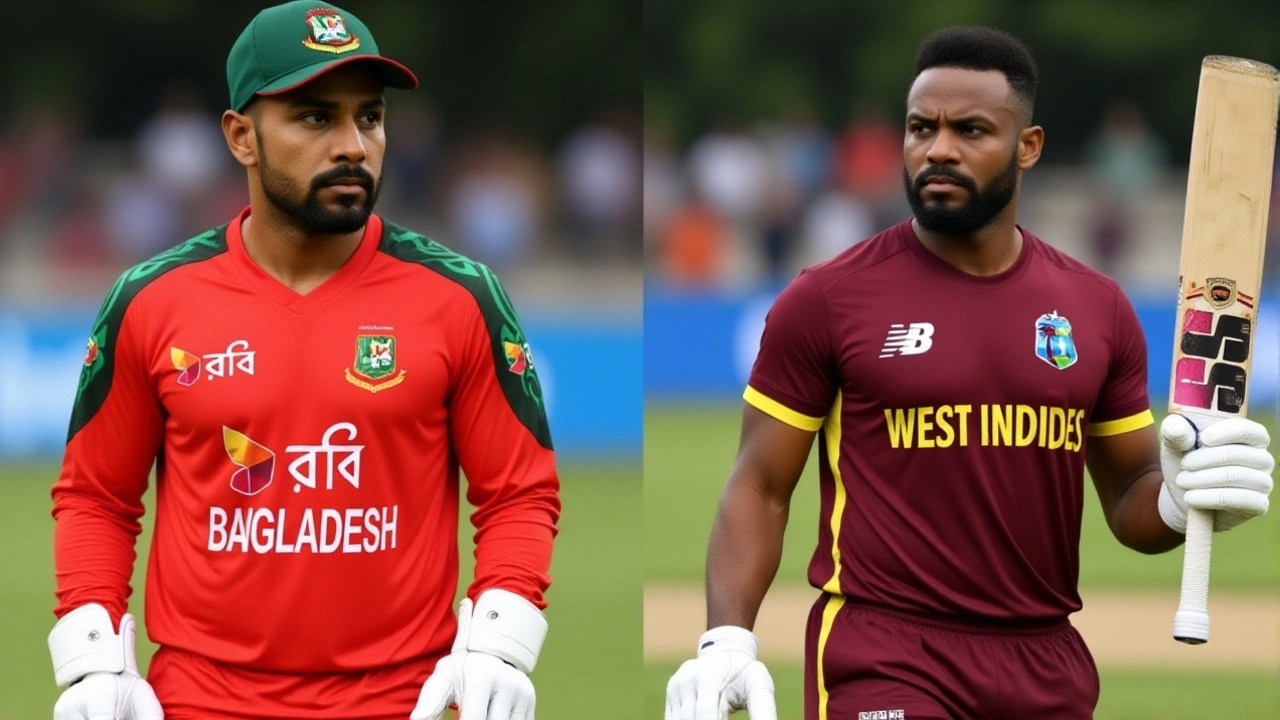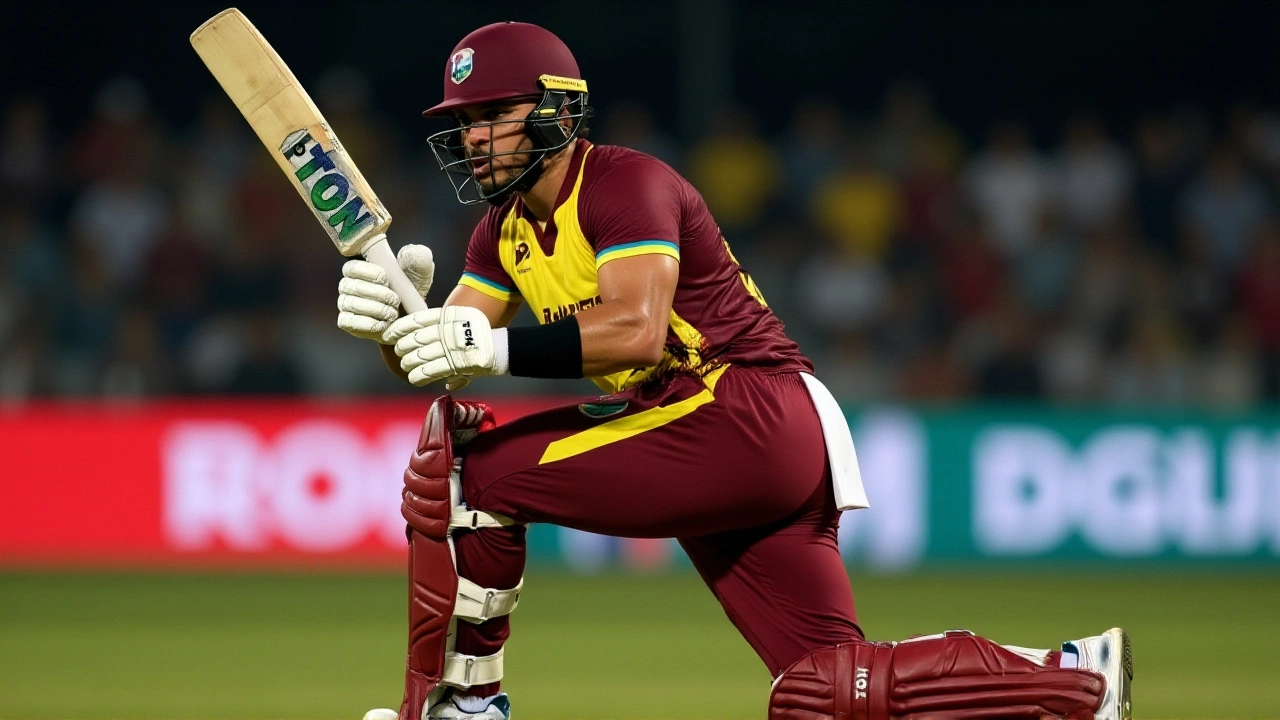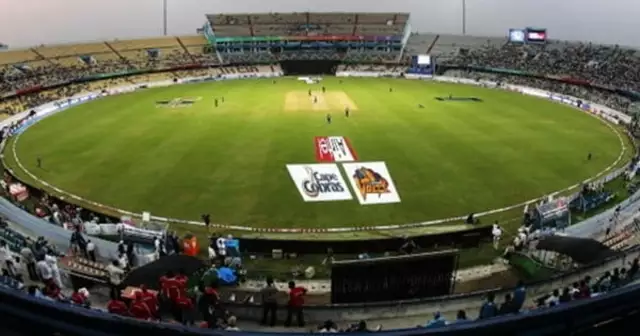On Wednesday, October 29, 2025, the West Indies cricket team clinched an unassailable 2-0 lead in their three-match T20I series against Bangladesh with a dramatic 14-run win at the Zahur Ahmed Chowdhury Stadium in Chattogram. Chasing 150 to stay alive in the series, Bangladesh fell short at 135 for 8, despite a fiery 61 from opener Tanzid Hasan. The victory wasn’t just about runs—it was a statement. West Indies, reeling from a brutal ODI series loss, responded with grit, precision, and the kind of spin wizardry that’s become their trademark.
Spin Magic and Precision Bowling Seal the Deal
"It wasn’t about power. It was about patience," said commentator Chandan Commentary during the broadcast. And nowhere was that more true than in the performances of Akeal Hosein and Romario Shepherd. Hosein, the left-arm spinner, dismantled Bangladesh’s middle order with a spell of 3 for 22 in four overs. His dismissal of Litton Das—a ball that drifted in late, deceived the batter into a sweep, and clipped the off stump—was described by fans as "a peach." Shepherd, the all-rounder, matched him with 3 for 29, including the crucial wicket of Mushfiqur Rahim in the 17th over when Bangladesh needed 32 off 20 balls.Jason Holder, the veteran all-rounder, didn’t score big with the bat, but his final over—conceding just 8 runs and removing Sabbir Rahman’s off stump—was textbook death bowling. That moment, captured in highlights as "Precision Perfect! Jason Holder uprooted Shamim’s off stump," became the symbolic end of Bangladesh’s hopes.
Bangladesh’s Heroic Effort Falls Just Short
Tanzid Hasan’s 61 off 48 balls was the only real bright spot for Bangladesh. He played with aggression, targeting the leg side and even clearing the ropes twice off Shepherd. But after his dismissal in the 14th over, the innings collapsed. Mustafizur Rahman, the veteran left-arm pacer, did his best to keep Bangladesh alive, claiming 3 for 21 in just four overs—including the key wickets of Nicholas Pooran and Shimron Hetmyer. His final over, where he conceded only 5 runs, was a masterclass in pressure management. But even his brilliance couldn’t overcome the cumulative weight of West Indies’ disciplined bowling and the lack of depth in Bangladesh’s lower order.What’s often overlooked is the mental toll of chasing on a slow pitch. The pitch, a classic Chattogram slow track, offered turn and variable bounce after the 10th over. West Indies, having batted first, knew exactly how to navigate it. Bangladesh didn’t.
A Series Defined by Contrasts
This T20I series is a microcosm of the broader six-match tour (October 18–31, 2025). Bangladesh won the ODI series 2-1, including a 179-run thrashing in the third ODI on October 23. They looked dominant, clinical, and well-prepared. But in T20Is, the game changes. The pace, the power-hitting, the spin variations—it’s a different rhythm. West Indies, long criticized for inconsistency, found theirs.The first T20I on October 27 ended with West Indies winning by 16 runs. The second? A 14-run win. Two narrow victories, both built on tight bowling and key moments. Bangladesh, who entered this series chasing their fifth straight bilateral T20I series win, now face the reality: their dominance in ODIs doesn’t automatically translate to the shortest format.

What Comes Next? The Final T20I and Beyond
The third and final T20I is still scheduled for October 31, 2025, at the same venue. West Indies will likely rest key players, giving fringe squad members a chance. But the message is clear: this team is building momentum. With the ICC T20 World Cup in 2026 on the horizon, this series win isn’t just about pride—it’s about confidence. For Bangladesh, the challenge is deeper. Their batting order lacks stability beyond their top three. Their spinners, while talented, lack the variety of West Indies’ attack. And their fielding? Still inconsistent under pressure.The broadcast rights were held by Sony Sports Network and streamed via Fancode App, while T Sports Bangladesh delivered extended highlights and social media snippets across Facebook, YouTube, and Instagram. Their 39-minute 24-second match recap became one of the most-watched cricket clips on their channel this month.
Why This Matters
This isn’t just another T20I win. It’s the first time since 2021 that West Indies have won two bilateral series in the same calendar year. It signals a return to form after years of turbulence. For Bangladesh, it’s a wake-up call: home advantage means little without adaptability. The Caribbean flair—unpredictable, flamboyant, yet ruthlessly efficient—was on full display. And in a sport increasingly dominated by data and analytics, sometimes the old-school magic still wins.Frequently Asked Questions
How did Akeal Hosein’s performance impact the match outcome?
Akeal Hosein’s 3 for 22 was the turning point. His spell broke Bangladesh’s momentum after Tanzid Hasan’s aggressive start, removing Litton Das and Shakib Al Hasan in consecutive overs. His ability to vary pace and flight on a slow pitch made him nearly unplayable in the middle overs, forcing Bangladesh into risky shots that led to wickets. Without his spell, Bangladesh likely would have chased down the target comfortably.
Why did Bangladesh lose despite Mustafizur Rahman’s 3 for 21?
Mustafizur was brilliant, but he was the only bowler who consistently troubled the West Indies top order. The rest of Bangladesh’s attack leaked runs—especially in the powerplay and death overs. West Indies’ middle order, led by Shepherd and Holder, absorbed pressure and accelerated when needed. Bangladesh’s lack of a second spin option and inconsistent death bowling proved costly.
What’s the significance of West Indies winning two series in 2025?
It’s their first back-to-back series wins in any format since 2019. After years of instability and player boycotts, this signals a cultural shift—more discipline, better preparation, and younger players stepping up. Winning in Bangladesh, a tough away venue, adds weight. It’s a strong signal ahead of the 2026 T20 World Cup, where they’ll need to compete with top teams like India and Australia.
How did the Zahur Ahmed Chowdhury Stadium pitch influence the game?
The pitch was slow, low, and offered consistent turn after the 10th over. Batters struggled to time shots, especially against spin. West Indies, having batted first, adapted quickly—scoring at 7.45 runs per over. Bangladesh, chasing, looked rushed. Their top order couldn’t settle, and their lower order had no time to rebuild. The pitch favored patience and accuracy—two things West Indies had in abundance.
Will the third T20I still matter now that West Indies have sealed the series?
Yes. While the series is won, West Indies will use it to test bench players like Alzarri Joseph and Shamar Joseph. For Bangladesh, it’s a chance to rebuild confidence and give emerging batters like Jaker Ali and Rishad Hossain exposure under pressure. The final match could determine who enters the 2026 World Cup with momentum—and who enters it with questions.
How does this result compare to past West Indies-Bangladesh T20I series?
West Indies had lost the last three bilateral T20I series against Bangladesh, including a 2-1 defeat in 2021. This win reverses that trend and marks their first series win over Bangladesh since 2018. It also ends Bangladesh’s five-match winning streak in bilateral T20I series—a run that began in 2020. The shift in momentum is significant and could alter how teams approach future matchups.



